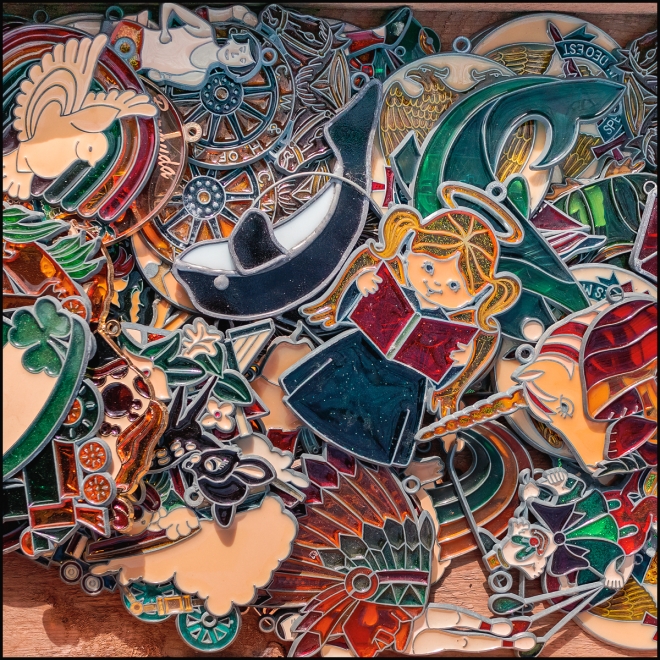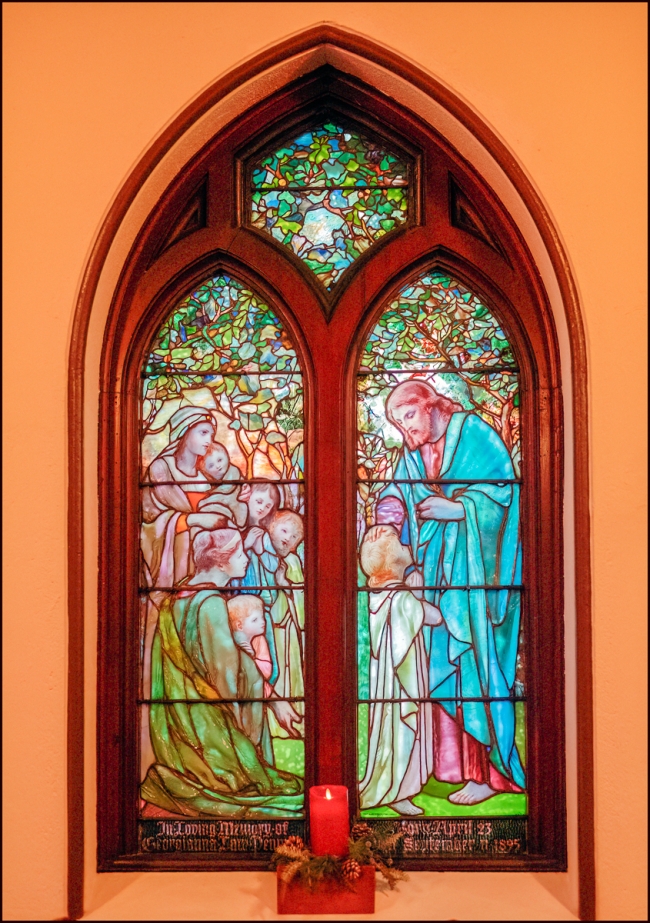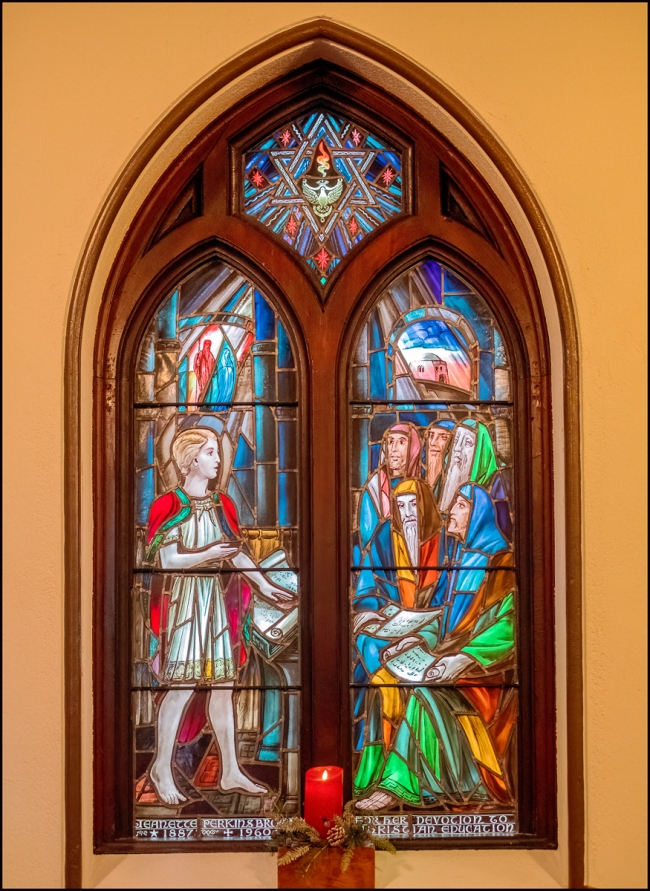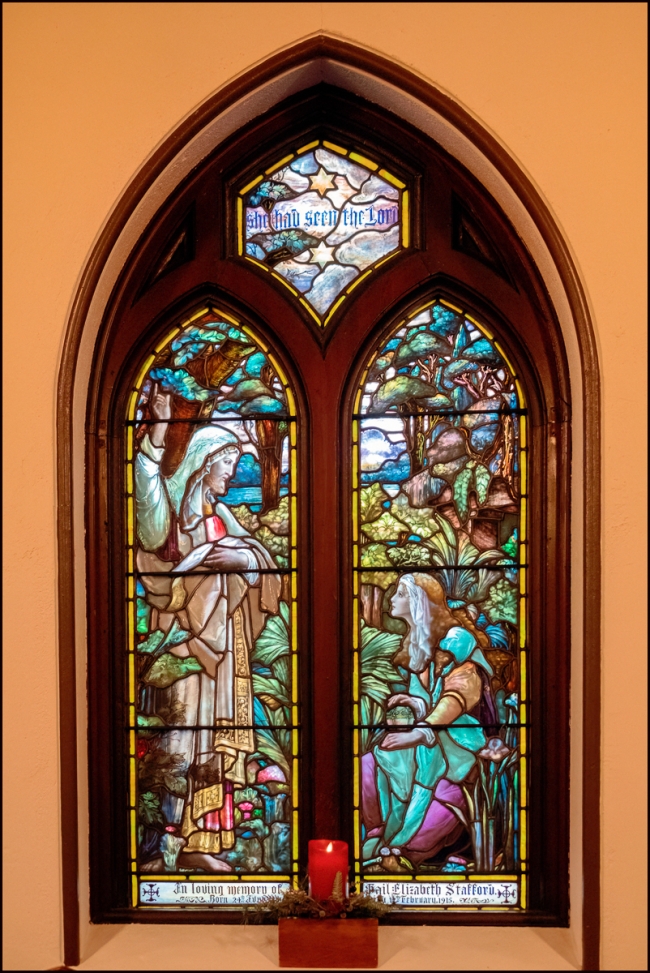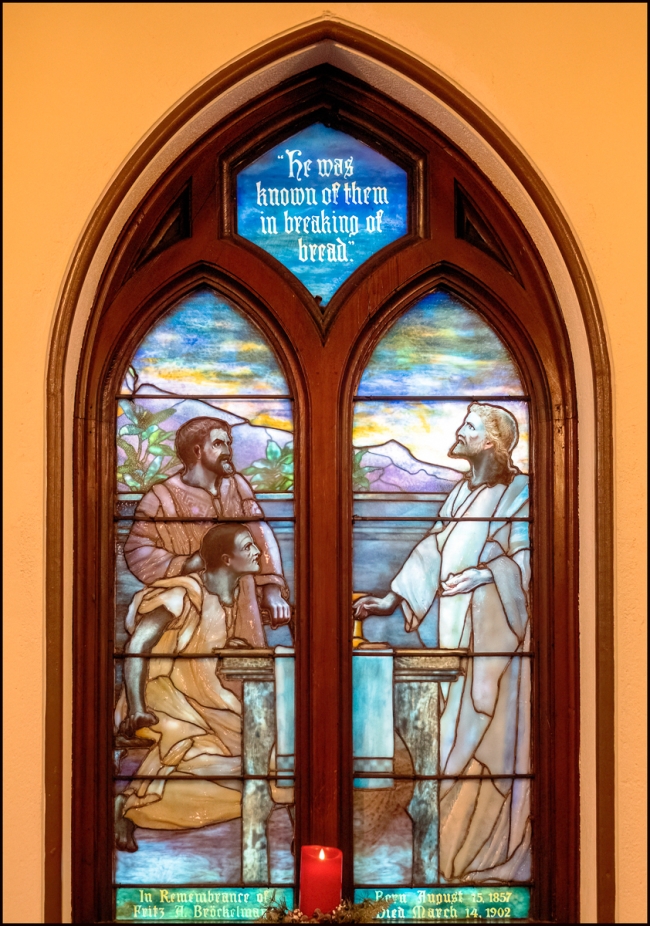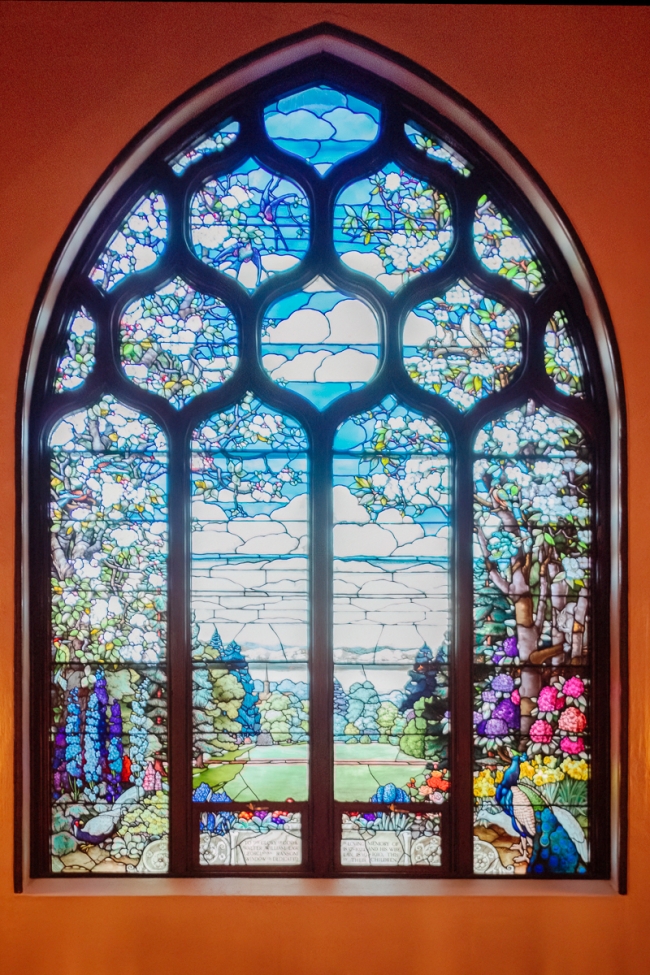Here are a few of the renowned stained glass windows in Briarcliff Manor Congregational Church. I would have liked to have taken pictures of all of them, but I was attending a concert and couldn’t get to a number of them without going through the orchestra. I tried, but after inadvertently lowering a music stand and knocking over a flute, decided it wasn’t a good idea. After the concert it was dark outside and impossible to take more pictures.
Above: Christ Blessing the Children 1895-1899*.
“The Briarcliff Congregational Church (BCC) is endowed with many wonderful gifts both spiritual and material. One of the church’s priceless treasures is its collection of stained-glass windows, spanning more than 100 years of stained-glass art. All the windows were donated as memorial gifts, a tradition started by the church’s benefactor, Walter W. Law. Most represent specific biblical stories; some show historic persons; one or two allow the viewer’s imagination to have a go; others’ symbolism have multiple interpretations. All are beautiful to see; all change as the light moves with the day. The windows at The Briarcliff Congregational Church are also a reflection of the history, life, and traditions of the church as well as that of the community.
There are 17 stained glass windows in all, representing several well-known studios and decorative arts companies: J&R Lamb, NY; William C. Willett, Philadelphia; John Hardman Studios, Birmingham and London; Woodhaven Studios, Bermuda. Perhaps the most well-known among these is Tiffany Studios. BCC has 7 magnificent Tiffany windows, installed between 1898 and 1906.” (Briarcliff Manor Congregational Church Website).
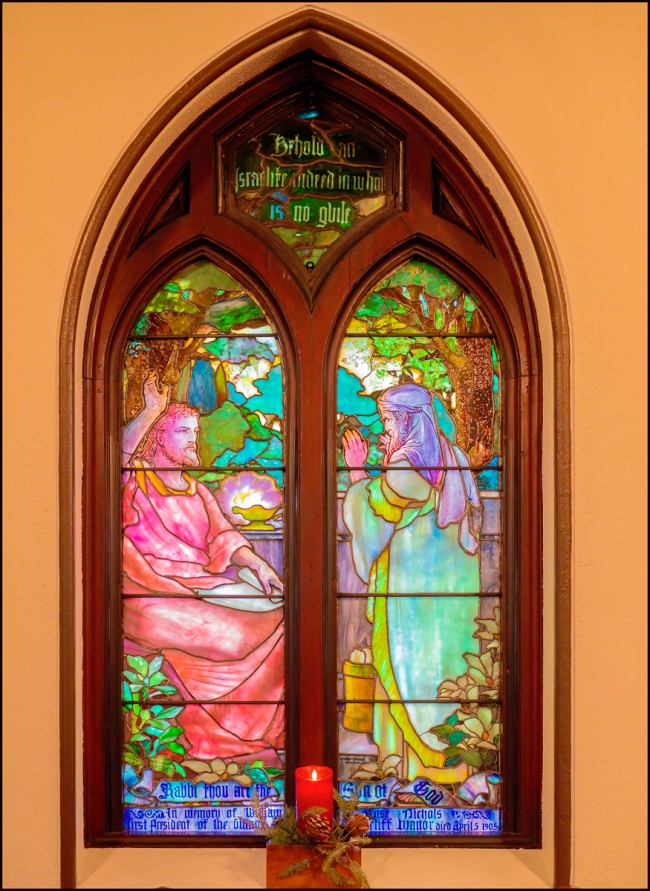
Jesus and Nathaniel, 1906*.
The Boy Jesus in Jerusalem, 1963.
Jesus and Mary Magdalene, Post 1915.
Supper at Emmaus, 1902*.
The East Transept, 1929.
* indicates a Tiffany window.
For more information on the church together with some interesting historical pictures and some beautiful color photographs of the magnificent Tiffany (and other) stained glass windows see “Glory in the Glass. A Celebration of the Briarcliff Congregational Church 1896-1996”, Edited Karen M. Sharman. Copies may still be available from the Briarcliff Manor Congregational Church at 30 South State Road, Briarcliff Manor, New York 10510. Phone: 914-941-4368, Fax: 914-941-1513, info@briarcliffchurch.org. Church Office Hours:Tuesday – Friday 9:00 A.M. – 2:00 P.M.
The “Windows of the Soul” section of the church’s website briefly explores 10 of these magnificent windows: their art, history, biblical reference, and meaning.
Taken with a Fuji X-E3 and Fuji XF 35mm f1.4 R

